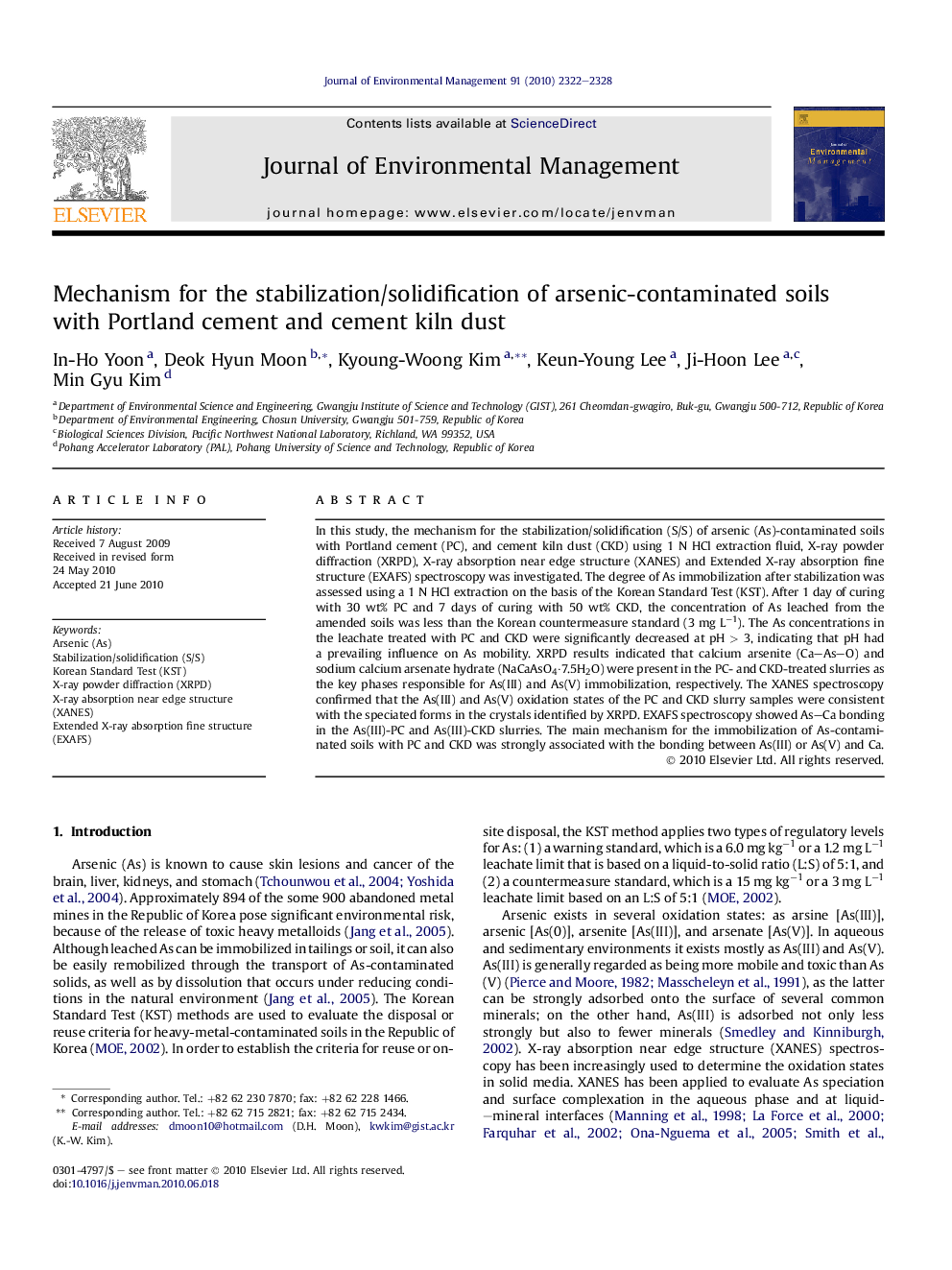| Article ID | Journal | Published Year | Pages | File Type |
|---|---|---|---|---|
| 1057203 | Journal of Environmental Management | 2010 | 7 Pages |
In this study, the mechanism for the stabilization/solidification (S/S) of arsenic (As)-contaminated soils with Portland cement (PC), and cement kiln dust (CKD) using 1 N HCl extraction fluid, X-ray powder diffraction (XRPD), X-ray absorption near edge structure (XANES) and Extended X-ray absorption fine structure (EXAFS) spectroscopy was investigated. The degree of As immobilization after stabilization was assessed using a 1 N HCl extraction on the basis of the Korean Standard Test (KST). After 1 day of curing with 30 wt% PC and 7 days of curing with 50 wt% CKD, the concentration of As leached from the amended soils was less than the Korean countermeasure standard (3 mg L−1). The As concentrations in the leachate treated with PC and CKD were significantly decreased at pH > 3, indicating that pH had a prevailing influence on As mobility. XRPD results indicated that calcium arsenite (Ca–As–O) and sodium calcium arsenate hydrate (NaCaAsO4·7.5H2O) were present in the PC- and CKD-treated slurries as the key phases responsible for As(III) and As(V) immobilization, respectively. The XANES spectroscopy confirmed that the As(III) and As(V) oxidation states of the PC and CKD slurry samples were consistent with the speciated forms in the crystals identified by XRPD. EXAFS spectroscopy showed As–Ca bonding in the As(III)-PC and As(III)-CKD slurries. The main mechanism for the immobilization of As-contaminated soils with PC and CKD was strongly associated with the bonding between As(III) or As(V) and Ca.
